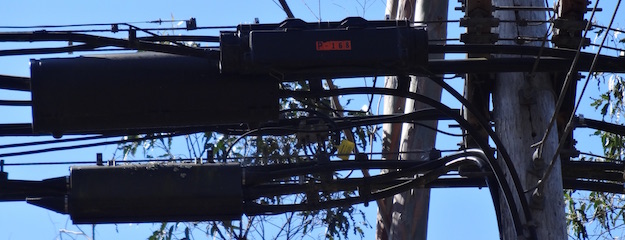
If you want to build your own broadband network, you need to have access to utility pole routes along the way – not only is it cheaper than installing your own, as a practical matter you’re unlikely, to say the least, to get permission to plant a second row of poles.
Nationally, the rates for pole attachments are set by the Federal Communications Commission. Last week, the FCC lowered the price for telecoms companies to the same rate paid by cable operators. FCC commissioner Ajit Pai explained why in a concurring opinion…
Before Internet service providers (ISPs) can offer service to customers, they must string fiber optics, coaxial cables, and other wires on utility poles and through underground conduit. The rates for such attachments are determined by one of two formulas set forth in section 224 of the Communications Act. The first applies to “cable television systems” and has been historically lower (the cable rate). The second applies to “telecommunications services” and has been historically higher (the telecom rate). By reclassifying Internet access service as a telecommunications service, the Commission gave utilities the go-ahead to charge the higher telecom rate to cable and other non-telecom ISPs, costing American consumers up to $200 million a year1 in higher prices and slowing the deployment of high-speed broadband.
Today, the Commission starts to repair some of this damage by lowering the telecom rate to the cable rate. That’s a good thing for all broadband providers and their consumers.
Here in California, the California Public Utilities Commission has primary responsibility for regulating utility pole access, so the FCC’s order will have a limited effect. But it does set a precedent, both for the cost of getting on poles and, maybe more importantly, for the principle that there’s no practical difference between a telecoms company and a cable company. They’re all the same.
